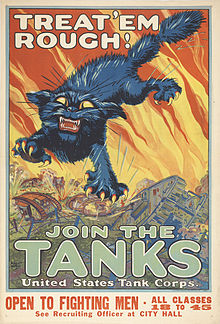
The 1st Infantry Division (1ID) is a combined arms division of the United States Army, and is the oldest continuously serving division in the Regular Army. It has seen continuous service since its organization in 1917 during World War I. It was officially nicknamed "The Big Red One" after its shoulder patch and is also nicknamed "The Fighting First." The division has also received troop monikers of "The Big Dead One" and "The Bloody First" as puns on the respective officially sanctioned nicknames. It is currently based at Fort Riley, Kansas.
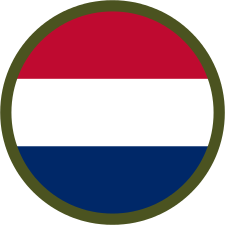
The American Expeditionary Forces (AEF) was a formation of the United States Armed Forces on the Western Front during World War I, comprised mostly of units from the U.S. Army. The AEF was established on July 5, 1917, in France under the command of then-Major General John J. Pershing. It fought alongside French Army, British Army, Canadian Army, British Indian Army, New Zealand Army and Australian Army units against the Imperial German Army. A small number of AEF troops also fought alongside Italian Army units in 1918 against the Austro-Hungarian Army. The AEF helped the French Army on the Western Front during the Aisne Offensive in the summer of 1918, and fought its major actions in the Battle of Saint-Mihiel and the Meuse-Argonne Offensive in the latter part of 1918.

The Battle of Saint-Mihiel was a major World War I battle fought from 12–15 September 1918, involving the American Expeditionary Forces (AEF) and 110,000 French troops under the command of General John J. Pershing of the United States against German positions. The U.S. Army Air Service played a significant role in this action.

The 84th Training Command ("Railsplitters") is a formation of the United States Army. During World War I it was designated the 84th Division, American Expeditionary Forces; during World War II it was known as the 84th Infantry Division. From 1946 to 1952, the division was a part of the United States Army Reserve as the 84th Airborne Division. In 1959, the division was reorganized and redesignated once more as the 84th Division. The division was headquartered in Milwaukee in command of over 4,100 soldiers divided into eight brigades—including an ROTC brigade—spread throughout seven states.
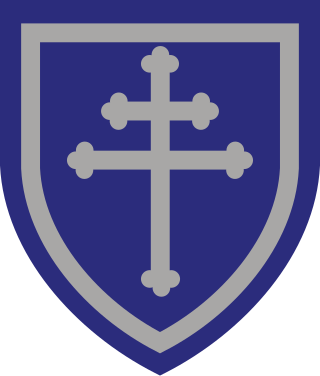
The 79th Infantry Division was an infantry formation of the United States Army Reserve in World Wars I and II.
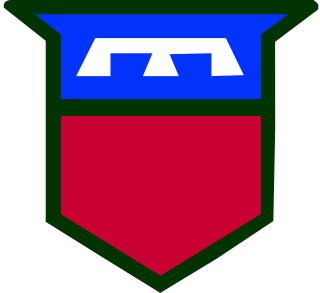
The 76th Infantry Division was a unit of the United States Army in World War I, World War II and the Cold War. The division was inactivated in 1996 and has been reconstituted as the 76th US Army Reserve Operational Response Command in 2013.
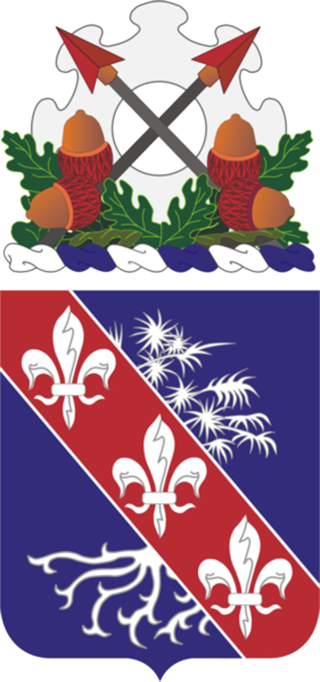
The 327th Infantry Regiment is an infantry regiment of the 101st Airborne Division of the United States Army. During World War II, the 327th was a glider-borne regiment of the 101st Airborne Division. It fought during World War I as part of the 82nd Division. It has also been deployed in the Vietnam War, Gulf War, and most recently to Iraq and Afghanistan. The song "Glider Rider" describes (humorously) some of the slights that glider-borne troops felt they received from the Army during World War II; though the regiment's public fame rose with the 1949 movie Battleground about the Siege of Bastogne in late 1944.
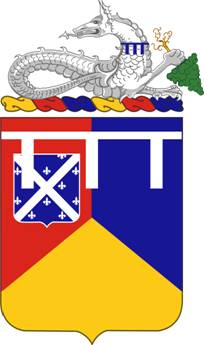
The 66th Armor Regiment is the oldest armored unit in the United States Army, tracing its lineage to the 301st Tank Battalion which served with distinction soon after it was formed in the First World War; the 301st trained at Camp Meade, Maryland, where then-Cpt. Dwight D. Eisenhower was an instructor. It has often been rumored that the 301st, the parent unit of the 66th, was first commanded by Col. George S. Patton, but this appears not to have been the case; while Patton was the first officer assigned to the Tank Corps, and while the 301st Tank Battalion was the first unit formed, Patton went nearly immediately to France to train Americans attached to Allied commands. The 301st was the only American heavy tank battalion to have seen action in the war. After the war, the 301st transitioned in the Regular Army to become the 66th Infantry Regiment by way of the 16th Tank Battalion.
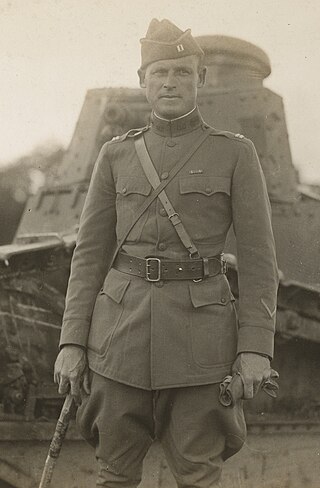
Ranulf Compton was a United States representative from Connecticut. He also served as commander of the 327th (345th) Tank Battalion in George S. Patton's 304th Tank Brigade on the Western Front in 1918 France.

The 79th Group Army, Unit 31671, formerly the 39th Group Army, is a military formation of the Chinese People's Liberation Army Ground Forces (PLAGF). The 79th Group Army is one of thirteen total group armies of the PLAGF, the largest echelon of ground forces in the People's Republic of China, and one of three assigned to the nation's Northern Theater Command.
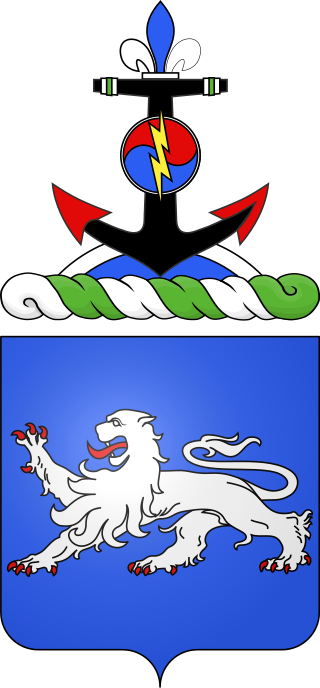
The 68th Armor Regiment is an armored regiment of the United States Army. It was first activated in 1933 in the Regular Army as the 68th Infantry Regiment.

The 301st Heavy Tank Battalion of the American Expeditionary Forces (AEF) was a Heavy Tank unit during World War I. Of the eight heavy battalions raised, only the 301st saw combat. The 301st was reorganized post-war into the 66th Infantry Regiment, later to become the 66th Armor Regiment, the oldest armored regiment in the United States Army.

Harold William Roberts was a United States Army corporal and a recipient of the United States military's highest decoration, the Medal of Honor, for his actions in World War I. Roberts, a tank driver, was moving his tank into a clump of bushes to afford protection to another tank which had become disabled. The tank slid into a shell hole, 10 feet deep, filled with water, and was immediately submerged. Knowing that only one of the two men in the tank could escape, Cpl. Roberts said to the gunner, "Well, only one of us can get out, and out you go," whereupon he pushed his companion through the back door of the tank and drowned.
The 67th Armored Regiment is an armored regiment in the United States Army. The regiment was first formed in 1929 in the Regular Army as the 2nd Tank Regiment (Heavy) and redesignated as the 67th Infantry Regiment (Medium Tanks) in 1932. It first became the 67th Armor in 1940. The regiment participated in World War I, World War II, Desert Storm/Desert Shield, Operation Iraqi Freedom, Operation Enduring Freedom, Operation Spartan Shield, Operation Inherent Resolve, Operation Resolute Support, and Operation Freedom's Sentinel.

Samuel Dickerson Rockenbach was an American Brigadier General and father of the United States Tank Corps.
The Tank Corps, National Army, was the stateside tank unit of the United States Army during and after World War I. Preceded by the Tank Service of the National Army of 15 February 1918 in the 65th Engineers at Camp Meade, the service was removed from the Engineer Corps and organized as the Tank Corps, National Army, with command transferring from Col H. H. Ferguson to Col Ira Clinton Welborn on 9 March.

Sereno Elmer Brett was a highly decorated brigadier general in the United States Army who fought in both World War I and World War II and played a key, if little recognized today, role in the development of armored warfare along with the creation of the U.S. Interstate Highway. He was also a lifelong friend of U.S. President, and former army colleague, Dwight D. Eisenhower.

The 326th Infantry Regiment was an infantry regiment of the United States Army that saw active service during World War I, as part of the 82nd Division and fought in the Meuse-Argonne Offensive and was inactivated in 1919. The regiment was reactivated during World War II, again as part of the 82nd Infantry Division, and was converted into a glider infantry formation, becoming the 326th Glider Infantry Regiment. Originally part of the 82nd Airborne Division, the regiment transferred to the 13th Airborne Division. However, despite training for almost three years, the 326th was never involved in any combat.
The 304th Armored Cavalry Regiment was a Massachusetts-based reconnaissance unit of the United States Army Organized Reserve Corps, which briefly existed after World War II. It was constituted in 1948 and partially organized from existing units before being inactivated in 1950 and disbanded in 1952.

The Services of Supply was the support chain of the American Expeditionary Forces in France, England, Italy and the Netherlands during World War I. It was disbanded on August 31, 1919, in France.

